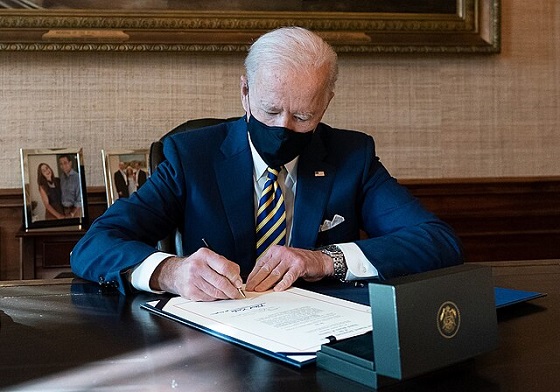Alberta
39 percent increase in funding for RCMP instigates discussion about future policing for rural Alberta

Alberta’s government will pay the 39% increase for one year and will begin engagement with smaller communities on their policing needs for the future.
Alberta’s government is temporarily freezing the amount rural municipalities are responsible for paying for front-line policing services in Alberta.
The province is responsible for providing policing services to municipal districts, counties and urban municipalities with populations less than 5,000. In response to rising rural crime, Alberta’s government announced increased funding for RCMP services in 2019 which helped create hundreds of additional RCMP positions across the province.
When these changes came into effect in 2020, the province also worked with Alberta Municipalities and Rural Municipalities of Alberta to create a shared funding model through the Police Funding Regulation. Now, due to higher costs from recent RCMP collective agreements, the cost for policing in these smaller communities will increase by 39 per cent, with no corresponding increase in the services provided. To assist municipalities with these new costs, Alberta’s government will pay the increase for one year and will begin engagement with them on their policing needs for the future.
“The expiring regulation would have municipalities seeing a 39 per cent increase in their costs – with no improvement in policing services delivered. We know this is not acceptable for many municipalities. This cost freeze will give rural municipalities the stability and predictability they need, and it will allow for meaningful engagement between the province and municipalities on equitable support.”
“Alberta’s government understands that such an increase in costs for service will be a challenge to our rural municipalities. With the costs frozen for a year, we look forward to a comprehensive review of the police funding model with our municipal partners. During our review, we will carefully consider all factors to ensure we provide an updated funding model that is sustainable.”
Municipalities are preparing their budgets for 2025, and those served by the RCMP under the Provincial Police Service Agreement can continue to expect the same level of service without the additional costs for one year. While these costs are shared between municipalities and the province, the province will pay a higher proportion of the costs next fiscal year, a total of $27 million, so that municipalities’ costs remain stable while they determine how to cover the increases on a forward basis and what the best model of policing is for their community.
The Police Funding Regulation introduced in 2020 was phased in over several years, with rural municipalities paying an increasing share of their policing costs each year for four years. Municipalities have been paying 30 per cent of front-line policing costs since fiscal year 2023-24. By sharing costs, the province has been able to afford the addition of many new RCMP police officers, programs and services over the past several years.
The Police Funding Regulation has been in place for almost five years, and with the significant cost increases coming from the federal government, the province will undertake a review to determine what improvements may be needed. While the regulation was originally supposed to expire March 31, 2025, Alberta’s government has extended it by one year to March 31, 2026, which will enable the province and municipalities to have fulsome conversations about future policing needs and models. More details about the comprehensive review and engagement opportunities for rural municipalities will be released shortly.
Quick Facts:
- The Police Funding Regulation brought in a new funding model, which was phased in over several years, with rural municipalities paying an increasing share of their policing costs each year, reaching the intended 30 per cent in 2023.
- They were charged 10 per cent starting April 1, 2020. This increased to 15 per cent one year later, 20 per cent the following year and finally 30 per cent starting April 1, 2023.
- The initial funding model was based on 2018 costs to provide certainty and stability to municipalities.
- After 2024-25, the municipal share will be required to be based on current policing costs, resulting in a proposed 39 per cent increase in costs for municipalities.
- The Police Funding Model enabled a $235.4-million investment in policing over five years, adding 285 regular members and 244 civilian positions to enhance rural policing.
Alberta
Alberta takes big step towards shorter wait times and higher quality health care

From the Fraser Institute
On Monday, the Smith government announced that beginning next year it will change the way it funds surgeries in Alberta. This is a big step towards unlocking the ability of Alberta’s health-care system to provide more, better and faster services for the same or possibly fewer dollars.
To understand the significance of this change, you must understand the consequences of the current (and outdated) approach.
Currently, the Alberta government pays a lump sum of money to hospitals each year. Consequently, hospitals perceive patients as a drain on their budgets. From the hospital’s perspective, there’s little financial incentive to serve more patients, operate more efficiently and provide superior quality services.
Consider what would happen if your local grocery store received a giant bag of money each year to feed people. The number of items would quickly decline to whatever was most convenient for the store to provide. (Have a favourite cereal? Too bad.) Store hours would become less convenient for customers, alongside a general decline in overall service. This type of grocery store, like an Alberta hospital, is actually financially better off (that is, it saves money) if you go elsewhere.
The Smith government plans to flip this entire system on its head, to the benefit of patients and taxpayers. Instead of handing out bags of money each year to providers, the new system—known as “activity-based funding”—will pay health-care providers for each patient they treat, based on the patient’s particular condition and important factors that may add complexity or cost to their care.
This turns patients from a drain on budgets into a source of additional revenue. The result, as has been demonstrated in other universal health-care systems worldwide, is more services delivered using existing health-care infrastructure, lower wait times, improved quality of care, improved access to medical technologies, and less waste.
In other words, Albertans will receive far better value from their health-care system, which is currently among the most expensive in the world. And relief can’t come soon enough—for example, last year in Alberta the median wait time for orthopedic surgeries including hip and knee replacements was 66.8 weeks.
The naysayers argue this approach will undermine the province’s universal system and hurt patients. But by allowing a spectrum of providers to compete for the delivery of quality care, Alberta will follow the lead of other more successful universal health-care systems in countries such as Australia, Germany, the Netherlands and Switzerland and create greater accountability for hospitals and other health-care providers. Taxpayers will get a much better picture of what they’re paying for and how much they pay.
Again, Alberta is not exploring an untested policy. Almost every other developed country with universal health care uses some form of “activity-based funding” for hospital and surgical care. And remember, we already spend more on health care than our counterparts in nearly all of these countries yet endure longer wait times and poorer access to services generally, in part because of how we pay for surgical care.
While the devil is always in the details, and while it’s still possible for the Alberta government to get this wrong, Monday’s announcement is a big step in the right direction. A funding model that puts patients first will get Albertans more of the high-quality health care they already pay for in a timelier fashion. And provide to other provinces an example of bold health-care reform.
Alberta
Alberta’s embrace of activity-based funding is great news for patients

 From the Montreal Economic Institute
From the Montreal Economic Institute
Alberta’s move to fund acute care services through activity-based funding follows best practices internationally, points out an MEI researcher following an announcement made by Premier Danielle Smith earlier today.
“For too long, the way hospitals were funded in Alberta incentivized treating fewer patients, contributing to our long wait times,” explains Krystle Wittevrongel, director of research at the MEI. “International experience has shown that, with the proper funding models in place, health systems become more efficient to the benefit of patients.”
Currently, Alberta’s hospitals are financed under a system called “global budgeting.” This involves allocating a pre-set amount of funding to pay for a specific number of services based on previous years’ budgets.
Under the government’s newly proposed funding system, hospitals receive a fixed payment for each treatment delivered.
An Economic Note published by the MEI last year showed that Quebec’s gradual adoption of activity-based funding led to higher productivity and lower costs in the province’s health system.
Notably, the province observed that the per-procedure cost of MRIs fell by four per cent as the number of procedures performed increased by 22 per cent.
In the radiology and oncology sector, it observed productivity increases of 26 per cent while procedure costs decreased by seven per cent.
“Being able to perform more surgeries, at lower costs, and within shorter timelines is exactly what Alberta’s patients need, and Premier Smith understands that,” continued Mrs. Wittevrongel. “Today’s announcement is a good first step, and we look forward to seeing a successful roll-out once appropriate funding levels per procedure are set.”
The governments expects to roll-out this new funding model for select procedures starting in 2026.
* * *
The MEI is an independent public policy think tank with offices in Montreal, Ottawa, and Calgary. Through its publications, media appearances, and advisory services to policymakers, the MEI stimulates public policy debate and reforms based on sound economics and entrepreneurship.
-

 Business2 days ago
Business2 days agoStocks soar after Trump suspends tariffs
-

 COVID-192 days ago
COVID-192 days agoBiden Admin concealed report on earliest COVID cases from 2019
-

 Business2 days ago
Business2 days agoScott Bessent Says Trump’s Goal Was Always To Get Trading Partners To Table After Major Pause Announcement
-

 2025 Federal Election1 day ago
2025 Federal Election1 day agoResearchers Link China’s Intelligence and Elite Influence Arms to B.C. Government, Liberal Party, and Trudeau-Appointed Senator
-

 Business1 day ago
Business1 day agoTimeline: Panama Canal Politics, Policy, and Tensions
-

 COVID-191 day ago
COVID-191 day agoFauci, top COVID officials have criminal referral requests filed against them in 7 states
-

 2025 Federal Election2 days ago
2025 Federal Election2 days agoRCMP memo warns of Chinese interference on Canadian university campuses to affect election
-

 2025 Federal Election2 days ago
2025 Federal Election2 days agoThe status quo in Canadian politics isn’t sustainable for national unity






